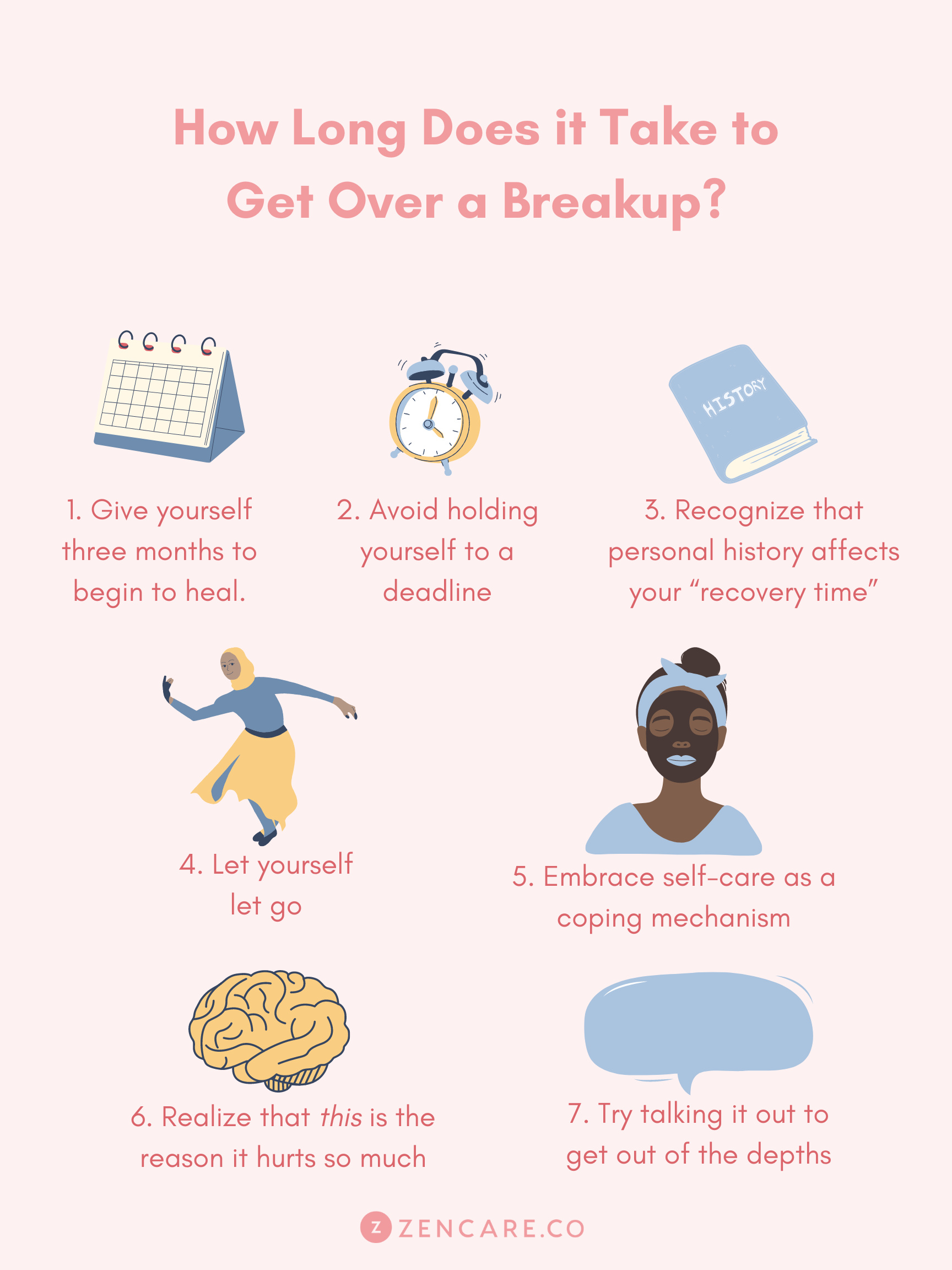Getting over a breakup can be an emotional rollercoaster, with ups and downs that vary from person to person. Everyone’s journey to healing is unique and the time it takes to move forward can’t be precisely quantified. However, understanding certain factors can help set realistic expectations for the healing process. This guide is designed to provide insights on what impacts recovery time and tips to help navigate through the post-breakup period.

Emotion Roadmap
Embarking on the journey to emotional recovery after a breakup begins with acknowledging that the process is deeply personal and varies greatly. There isn’t a one-size-fits-all timetable, but several factors can influence how long it takes to heal. Factors include the length and intensity of the relationship, the reasons for the breakup, personal resilience, support systems, and life circumstances.
-
Assess Emotional Investment
- Reflect on the depth of your emotional connection and commitment to the relationship. This will help you understand the weight of the bond you need to move past.
- Steps:
- Take time for personal reflection.
- Write down your feelings and the aspects of the relationship that were most significant to you.
- Summary: The more invested you were, the more time it might take to heal. This step is crucial for self-awareness but can be emotionally challenging.
-
Support System Gauge
- Analyze the strength and availability of your support system, including friends, family, and professional help.
- Steps:
- List the people you feel comfortable reaching out to.
- Consider seeking professional counseling or support groups.
- Summary: A solid support system can help accelerate the healing process, though it’s important to find the right balance and not become overly reliant on others.
-
Lifestyle Balance Scale
- Your daily routines and responsibilities can both hinder and help your recovery. Focus on maintaining balance.
- Steps:
- Incorporate self-care into your daily routine.
- Try new activities to diversify your focus.
- Summary: Staying active and maintaining a balanced lifestyle helps, but remember to give yourself space to grieve when needed.
-
Future Perspective Planner
- Develop a vision for your future as a single individual, setting new goals and aspirations.
- Steps:
- Make a list of personal goals.
- Begin planning for achievable milestones.
- Summary: Having a future perspective provides motivation, although it may be daunting to envision life without your past partner.
-
Digital Connection Analyzer
- Examine your digital ties with your ex-partner and determine what connections may impede your healing.
- Steps:
- Consider unfollowing or blocking your ex on social media.
- Archive or delete past conversations if they cause pain.
- Summary: Limiting digital contact can be beneficial but might feel isolating at first.
-
Self-Reflection Journal
- Keeping a journal can provide insights into your emotional patterns and progress.
- Steps:
- Write daily entries about your feelings and experiences.
- Look back over time to see your emotional growth.
- Summary: Journaling is therapeutic and shows your progress over time, but requires consistent effort.
-
Health & Wellness Monitor
- Physical health can affect emotional well-being. Maintain a focus on healthy habits.
- Steps:
- Commit to regular exercise and a nutritious diet.
- Get adequate sleep and practice stress-reducing techniques.
- Summary: Physical self-care is essential for emotional recovery; however, establishing these habits may be challenging initially.
-
Meaningful Engagement Meter
- Engaging in meaningful activities can promote healing by providing a sense of purpose and fulfillment.
- Steps:
- Identify activities that align with your values and interests.
- Volunteer or join community groups.
- Summary: Engagement provides distraction and fulfillment, but it’s important not to use it as a means to completely avoid dealing with emotions.
-
Personal Growth Timeline
- Reflect on personal growth since the breakup to foster a positive self-perception and build resilience.
- Steps:
- Recognize and celebrate small achievements.
- Seek out learning opportunities and self-improvement.
- Summary: Witnessing your own growth fosters positivity and confidence, yet it’s normal to have moments of doubt along the way.
-
Relapse Readiness Check
- Understand that healing is not linear and prepare for potential setbacks.
- Steps:
- Acknowledge that feelings of sadness or loneliness may resurface.
- Have a plan for coping with difficult days.
- Summary: Preparing for setbacks builds resilience but confronting relapses can be discouraging.
In conclusion, while there’s no precise calculator for how long it takes to get over a breakup, understanding your personal journey through the factors and activities outlined can provide structure and guidance during this difficult time. Each step offers direction to help navigate the emotional landscape of a breakup and promotes ways to come out stronger on the other side.
FAQs
-
How long does the average person take to get over a breakup?
While there is no set timeline, studies suggest it can take, on average, anywhere from six weeks to several months to start feeling better after a breakup. -
Is it normal to think about my ex even after a long time?
Yes, it is normal. Breakups often leave lasting impressions, and it’s common for memories or emotions to resurface from time to time. -
How can I tell if I’m making progress in getting over my breakup?
Signs of progress can include feeling more comfortable being single, not being overwhelmed by emotions related to the breakup, and engaging in new interests or activities.







